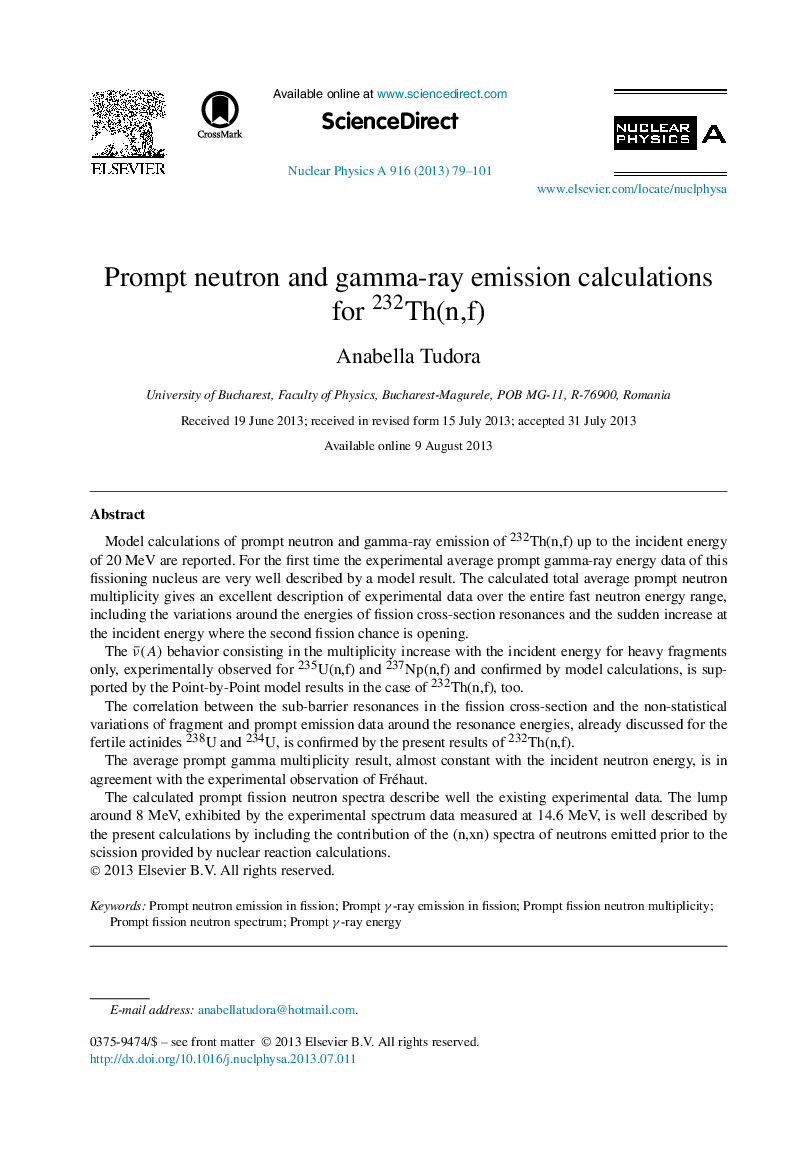| Article ID | Journal | Published Year | Pages | File Type |
|---|---|---|---|---|
| 1836138 | Nuclear Physics A | 2013 | 23 Pages |
Model calculations of prompt neutron and gamma-ray emission of 232Th(n,f) up to the incident energy of 20 MeV are reported. For the first time the experimental average prompt gamma-ray energy data of this fissioning nucleus are very well described by a model result. The calculated total average prompt neutron multiplicity gives an excellent description of experimental data over the entire fast neutron energy range, including the variations around the energies of fission cross-section resonances and the sudden increase at the incident energy where the second fission chance is opening.The ν¯(A) behavior consisting in the multiplicity increase with the incident energy for heavy fragments only, experimentally observed for 235U(n,f) and 237Np(n,f) and confirmed by model calculations, is supported by the Point-by-Point model results in the case of 232Th(n,f), too.The correlation between the sub-barrier resonances in the fission cross-section and the non-statistical variations of fragment and prompt emission data around the resonance energies, already discussed for the fertile actinides 238U and 234U, is confirmed by the present results of 232Th(n,f).The average prompt gamma multiplicity result, almost constant with the incident neutron energy, is in agreement with the experimental observation of Fréhaut.The calculated prompt fission neutron spectra describe well the existing experimental data. The lump around 8 MeV, exhibited by the experimental spectrum data measured at 14.6 MeV, is well described by the present calculations by including the contribution of the (n,xn) spectra of neutrons emitted prior to the scission provided by nuclear reaction calculations.
